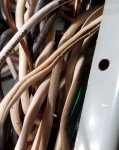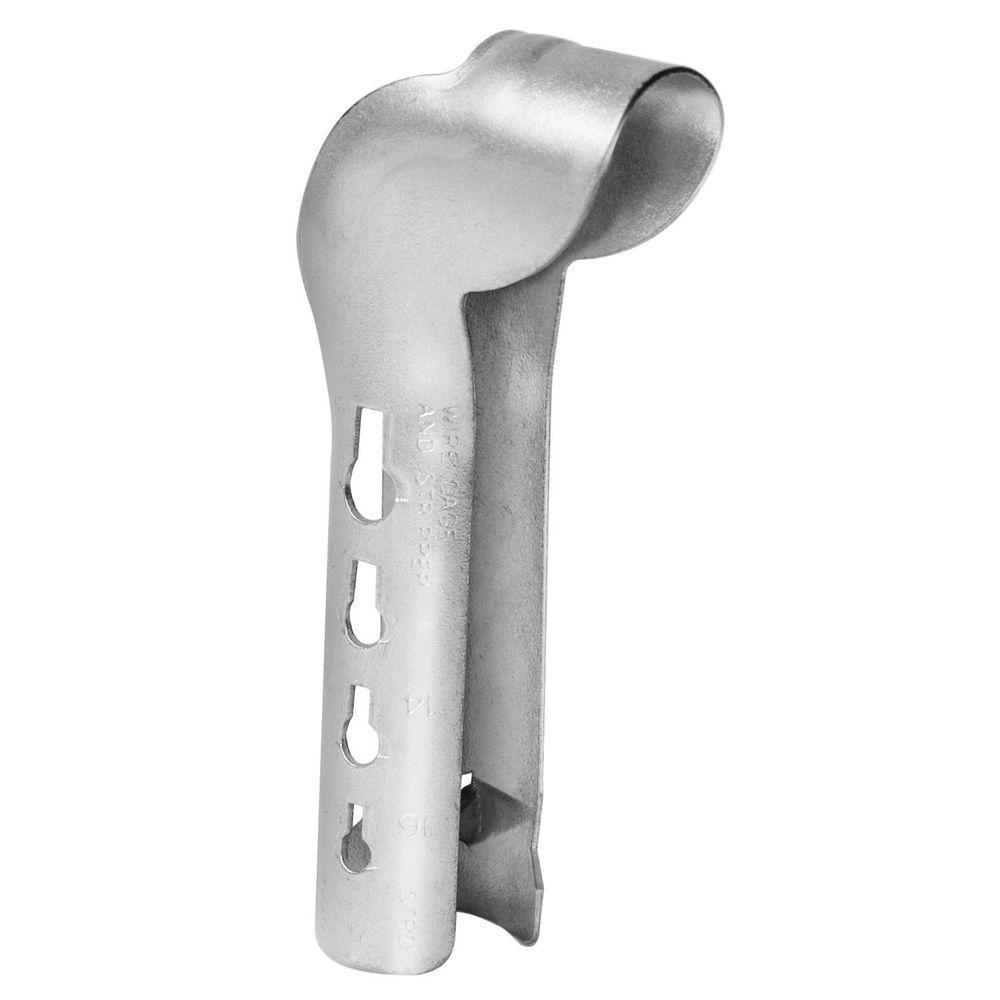Fred B
Senior Member
- Location
- Upstate, NY
- Occupation
- Electrician
I have an older home that am working on circa 1970, been atleast one newer rework but still with the older wiring, all older NM 60o C. Question, why hasn't it burned down? Found multiple sliced conductors both hot and neutrals. In the j boxes, panels, and receptacles. Haven't opened them all as scope of job it wasn't called for.
Slices just like this.

Another question, could those slices have opened over time and not noticable on initial installation where wire was only scored then opened as they aged? Looks like whomever did installation while removing NM sheath with a blade cut into the conductors.
Also found evidence of heating on the breakers. And found one receptacle that had been arcing and found weld mark on terminal screw and the sliced wire in that box. Wire actually broken in 2 at arc point and being held together with electrical tape, and was still "working".(Was working on that line when found it). Have recommended rewire but owner is unwilling, so how dangerous of a situation is this? Or am I being over cautious? And what is my level of liability for not doing a complete rewire, as I've already done some work before finding all these issues? Would doing a full megger be advisable as it would definitely show the damaged insulation? Or is there another way to test proof of wire condition to convince owner to do the rewire? Not hungry for the work but more concerned about covering my butt.
Slices just like this.

Another question, could those slices have opened over time and not noticable on initial installation where wire was only scored then opened as they aged? Looks like whomever did installation while removing NM sheath with a blade cut into the conductors.
Also found evidence of heating on the breakers. And found one receptacle that had been arcing and found weld mark on terminal screw and the sliced wire in that box. Wire actually broken in 2 at arc point and being held together with electrical tape, and was still "working".(Was working on that line when found it). Have recommended rewire but owner is unwilling, so how dangerous of a situation is this? Or am I being over cautious? And what is my level of liability for not doing a complete rewire, as I've already done some work before finding all these issues? Would doing a full megger be advisable as it would definitely show the damaged insulation? Or is there another way to test proof of wire condition to convince owner to do the rewire? Not hungry for the work but more concerned about covering my butt.



